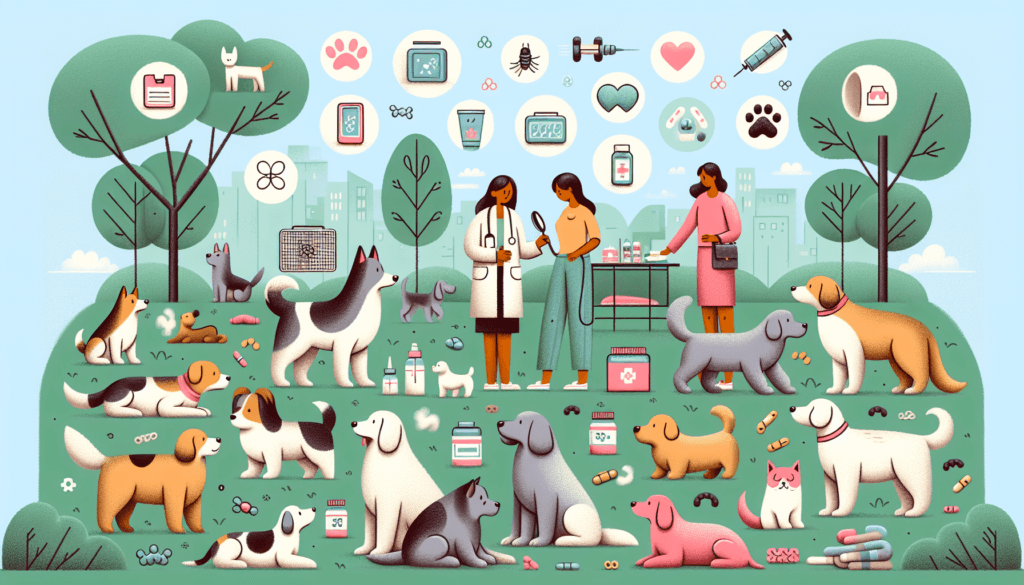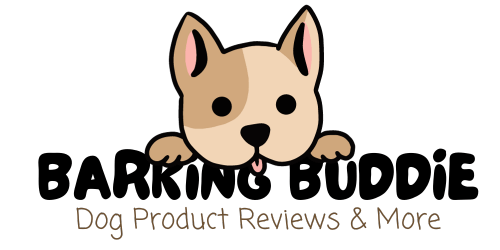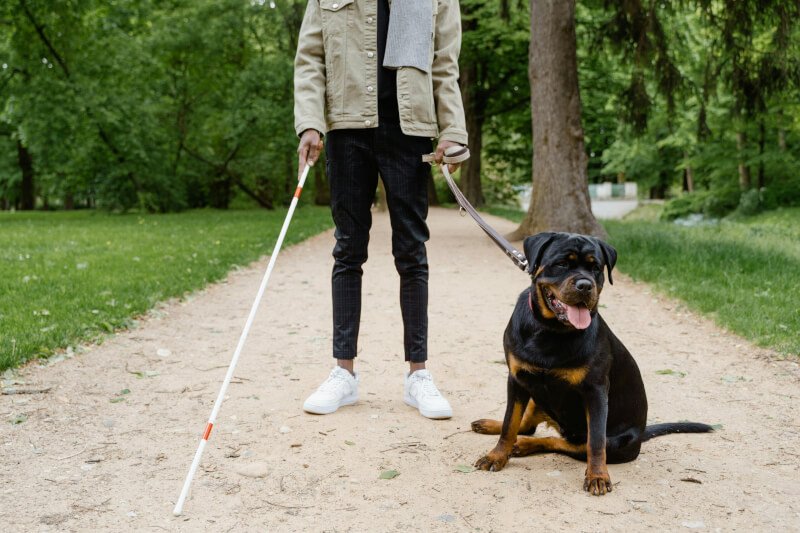If you’re a part of a vibrant dog-loving community, then you know how wonderful it is to be surrounded by our furry friends. However, for some of us, dog allergies can put a damper on our enjoyment. The good news is that there are several best practices you can implement to ensure a harmonious coexistence between allergy sufferers and the beloved canines. In this article, we will explore effective strategies for managing dog allergies in a dog community, allowing everyone to have a paw-sitively delightful experience.

Identifying Dog Allergies
When it comes to identifying dog allergies, it’s important to understand the common allergens that can trigger a reaction in dogs. These allergens can include things like pollen, dust mites, mold, and certain foods. By being aware of these potential triggers, you can take steps to minimize your dog’s exposure and manage their allergies effectively.
Understanding Common Allergens
Pollen is a common allergen that can affect both humans and dogs. It’s important to be aware of the seasonal fluctuations in pollen levels and take precautions during peak times. Dust mites are another common allergen that can be found in every home. Regular cleaning and dusting can help minimize your dog’s exposure to these microscopic pests. Mold is another allergen that can thrive in damp environments, so it’s important to keep your living spaces clean and dry.
Food allergies can also be a source of discomfort for dogs. Common food allergens include chicken, beef, dairy products, and certain grains. Identifying these food allergies can be done through an elimination diet, where you gradually remove and reintroduce different foods to pinpoint the allergen.
Signs and Symptoms of Dog Allergies
Dog allergies can manifest in a variety of ways, and it’s important to recognize the signs and symptoms in order to provide the appropriate care for your furry friend. Some common signs of allergies in dogs include excessive itching, red and irritated skin, recurrent ear infections, and gastrointestinal issues such as vomiting and diarrhea.
If you notice any of these symptoms in your dog, it’s important to consult with a veterinarian for a proper diagnosis and treatment plan. Allergy testing, such as skin and blood tests, can be conducted to determine the specific allergens that are causing the reactions in your dog.
Preventing and Minimizing Dog Allergies
Prevention is key when it comes to managing dog allergies. Here are some best practices to help minimize your dog’s exposure to allergens:
Regular Dog Grooming
Regular grooming is essential in preventing and managing allergies in dogs. Brushing your dog’s coat frequently helps to remove any potential allergens such as pollen and dust. Bathing your dog with a hypoallergenic shampoo can also help soothe their skin and remove allergens that may be clinging to their fur.
Maintaining a Clean Living Environment
Keeping your living environment clean and free from allergens is crucial in managing dog allergies. Regular vacuuming, dusting, and washing of bedding can all help reduce the presence of allergens in your home. Using allergy-friendly cleaning products that are free from harsh chemicals can also be beneficial.
Choosing Hypoallergenic Dog Breeds
If you’re considering adding a new furry family member to your home and allergies are a concern, choosing a hypoallergenic dog breed can be a good option. Hypoallergenic breeds produce fewer allergens and are less likely to trigger allergic reactions in susceptible individuals. Some popular hypoallergenic breeds include poodles, bichon frises, and schnauzers.

Managing Dog Allergies in a Dog Community
Living in a community with other dogs can present unique challenges when it comes to managing dog allergies. However, with the right strategies in place, it’s possible to create a safe and allergy-friendly environment for all dogs. Here are some best practices for managing dog allergies in a dog community:
Education and Awareness
Raising awareness about dog allergies within the community is essential. Educating dog owners about the signs and symptoms of allergies, as well as the best practices for prevention and management, can help create a more understanding and supportive environment.
Implementing Hygiene Practices
Encouraging good hygiene practices among dog owners can help minimize the spread of allergens. This includes regular bathing and grooming of dogs, as well as regular cleaning and disinfection of communal areas.
Creating Allergy-Free Zones
Designating specific areas within the community as allergy-free zones can provide a safe space for dogs with allergies. These zones can be free from potential allergens such as grass, pollen, and other environmental triggers. Providing alternative surfaces, such as gravel or artificial turf, can also help reduce allergen exposure.
Allergy Testing and Treatment Options
If your dog is experiencing allergies, it’s important to consult with a veterinarian for proper testing and treatment. Here are some common options for testing and treating dog allergies:
Consulting with a Veterinarian
A veterinarian is the best resource for diagnosing and managing dog allergies. They can conduct a thorough examination and discuss the best course of action for testing and treatment.
Skin and Blood Allergy Tests
Skin and blood allergy tests can be conducted to identify specific allergens that are causing reactions in your dog. These tests can help create a targeted treatment plan that addresses the specific allergens.
Immunotherapy and Medications
Once the allergens have been identified, immunotherapy can be an effective treatment option. This involves exposing the dog to small amounts of the allergen over time, gradually building up tolerance. Medications such as antihistamines and corticosteroids may also be prescribed to manage symptoms and provide relief.

Food Allergies and Elimination Diets
Food allergies are another common issue for dogs, and identifying and eliminating food allergens is key in managing these allergies. Here’s how to approach food allergies in your dog:
Identifying and Eliminating Food Allergens
If you suspect your dog has a food allergy, an elimination diet can be used to identify the specific allergen. This involves feeding your dog a novel protein and carbohydrate source that they haven’t consumed before, and gradually reintroducing different foods to pinpoint the allergen.
Introduction of Novel Diets
Once the allergen has been identified, switching to a hypoallergenic or limited ingredient diet can help manage food allergies. These specialty diets are formulated to eliminate common allergens, making them a safer option for dogs with food sensitivities.
Working with a Veterinary Nutritionist
A veterinary nutritionist can provide guidance and support when it comes to managing food allergies in your dog. They can help you navigate the process of finding the right diet and ensure that your dog is receiving all the necessary nutrients.
Addressing Inhalant Allergies
Inhalant allergies, also known as environmental allergies, can cause discomfort for dogs. Here are some strategies to address inhalant allergies:
Understanding Airborne Allergens
Being aware of common airborne allergens such as pollen, mold spores, and dust mites can help you take proactive measures to minimize your dog’s exposure. Monitoring pollen levels and avoiding outdoor activities during peak times can provide relief for dogs with inhalant allergies.
Air Purifiers and HEPA Filters
Using air purifiers and HEPA filters in your home can help remove allergens from the air, creating a cleaner and safer environment for your dog. These devices can capture microscopic particles, including pet dander and pollen, reducing allergen levels indoors.
Avoiding Pollen and Other Irritants
When taking your dog outdoors, try to avoid areas with high levels of pollen or other airborne irritants. Wiping your dog’s paws and giving them a thorough rinse after outdoor excursions can help remove allergens from their fur and minimize exposure.

Reducing Allergens in Outdoor Spaces
While it may be challenging to control allergens in outdoor spaces, there are still steps you can take to minimize exposure for your dog. Here are some strategies for reducing allergens in outdoor spaces:
Regular Yard Maintenance
Keeping your yard well-maintained can help reduce allergens such as weeds and grasses. Regular mowing, trimming, and removing fallen leaves can minimize allergen levels in your outdoor spaces.
Choosing Low-Allergen Plants
When landscaping your yard, opt for low-allergen plants that are less likely to trigger allergic reactions in dogs. Researching and selecting dog-friendly plants can help create a safer outdoor environment.
Implementing Pest Control Measures
Pests such as fleas and ticks can exacerbate allergies in dogs. Implementing effective pest control measures, such as using flea repellents and regularly checking for ticks, can help reduce the risk of allergen exposure.
Interacting with Allergic Dogs
If you have a dog with allergies, it’s important to know how to interact with other allergic dogs in a safe and considerate manner. Here are some tips for interacting with allergic dogs:
Knowing How to Recognize Allergic Reactions
Understanding the signs and symptoms of allergic reactions in dogs can help you recognize when another dog is experiencing discomfort. This knowledge can empower you to take appropriate action and provide support if needed.
Proper Handling and Grooming Techniques
When interacting with allergic dogs, it’s crucial to use proper handling and grooming techniques to prevent allergen transfer. Avoid petting or handling the dog if you have allergens on your hands or clothing, and wash your hands thoroughly after contact.
Providing Allergy-Friendly Treats and Toys
If you’re interacting with an allergic dog, it’s considerate to provide allergy-friendly treats and toys. Opt for hypoallergenic options that are free from common allergens such as chicken or beef.

Supporting Allergy-Affected Dogs and Owners
Living with a dog allergy can be challenging for both the dog and their owner. Here are some ways to offer support and resources to allergy-affected dogs and their owners:
Networking and Sharing Experiences
Connecting with other dog owners who are dealing with similar allergy challenges can provide valuable support and information. Joining online communities or local support groups can help you share experiences, exchange tips, and offer encouragement.
Offering Emotional Support
Living with a dog allergy can be emotionally taxing, and offering understanding and empathy can go a long way in supporting allergy-affected dogs and their owners. Providing a listening ear and offering reassurance can help alleviate some of the stress and frustration associated with managing allergies.
Providing Access to Resources
Sharing resources and information about allergy management, such as reputable veterinarians, allergen-free products, and educational materials, can be incredibly helpful for allergy-affected dogs and their owners. Keeping a list of trusted resources handy and sharing it within the community can make navigating the world of dog allergies a little easier.
Dealing with Emergency Situations
While prevention and management are key in dealing with dog allergies, it’s important to be prepared for emergency situations. Here’s how to handle severe allergic reactions:
Recognizing Severe Allergic Reactions
Knowing the signs of a severe allergic reaction, such as difficulty breathing, facial swelling, and collapse, is crucial. If you suspect your dog is experiencing a severe allergic reaction, it’s important to act quickly.
Knowing When to Seek Immediate Veterinary Assistance
If you suspect your dog is having a severe allergic reaction, it’s important to seek immediate veterinary assistance. Contact your veterinarian or local emergency clinic for guidance on how to proceed. They can provide necessary medical intervention to stabilize your dog.
Keeping Allergen Emergency Kits Handy
Having an allergen emergency kit on hand can be lifesaving in an emergency situation. This kit should include items such as antihistamines prescribed by your veterinarian, contact information for your veterinarian and local emergency clinic, and instructions on how to administer any necessary medications.
By being proactive, educated, and supportive, we can create a safe and inclusive environment for all dogs, regardless of their allergies. Together, we can ensure that our furry friends live happy, healthy lives, free from the discomfort of allergies.


